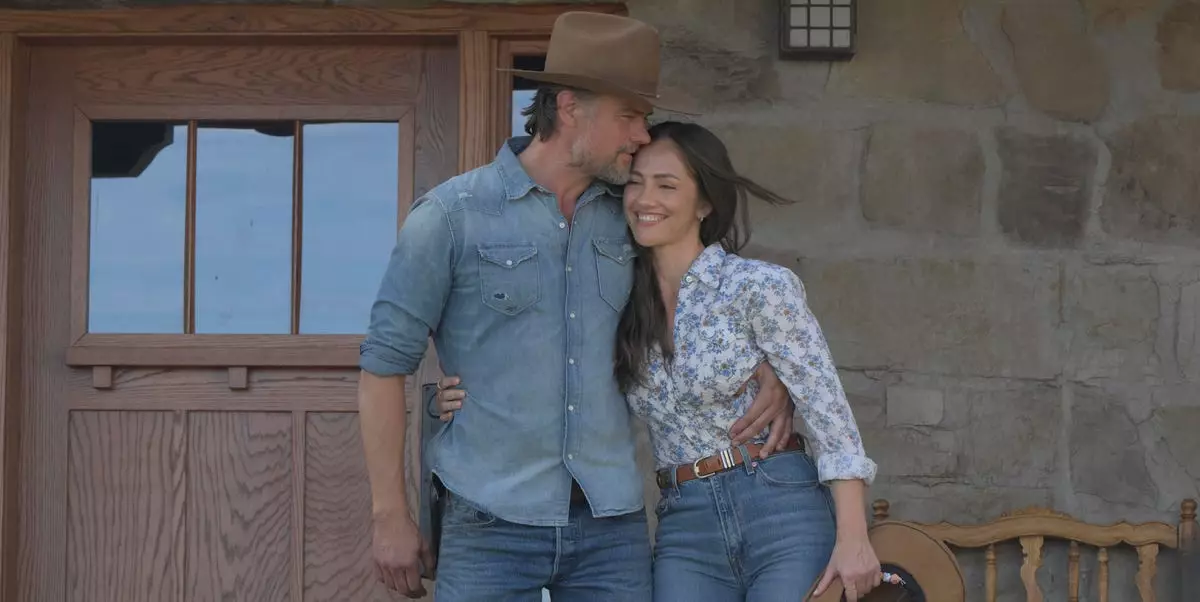In 2015, the first chapter of the Ransom Canyon saga introduced us to a lineage rooted in adventure and romance. At the core is James Kirkland, Staten’s father, portrayed by Brett Cullen—a character who encapsulates the spirit of a wanderer. His passionate encounter with an Apache woman named Millie sets off a series of events that shape the destiny of generations to come. This backstory not only delights fans but also provides a poignant lens through which to examine regional identity, cultural exchange, and the complexities of love. In drawing from historical roots, the saga offers more than a mere romance narrative; it serves as a reminder of how our origins significantly influence our lives.
Fast forward to the latest book in this horse-bridged universe, we dive into Staten’s transformative journey as he grapples with real-life responsibilities. Upon hearing about his grandfather’s illness, the carefree college student makes a monumental decision to leave Texas Tech and manage the family’s Double K Ranch—a choice that embodies a coming-of-age transition. This encapsulates a vital theme throughout the series: the struggle between youthful dreams and familial obligations, illustrating that personal growth often occurs in the face of adversity.
Casting New Characters into the Spotlight
As the narrative unfolds, readers are introduced to a vibrant cast, including Charlotte Lane and Peggy Warner. While Charlotte represents the aspirational, modern educator striving to awaken young minds, Peggy symbolizes the internal struggles many young adults face while caring for aging parents. Both characters epitomize the search for belonging in a world that often feels confining. The juxtaposition of their lives against the backdrop of Ransom Canyon highlights the varied paths one can take as one seeks fulfillment, whether that be through professional advancement or personal growth.
Further development occurs with characters exploring romantic entanglements. Lucas Reyes and Quinn bring to bear the complexities of young love, while the underlying thread of mystery in drifter Yancy Grey’s backstory enhances the intrigue. Emphasizing the importance of character-driven narratives, each subplot weaves seamlessly into the broader landscape, showcasing the intricate interplay between choice, circumstance, and emotion.
Unearthing Redemption in Love
The exploration of new romances takes various forms within the series, perhaps most compellingly illustrated through Lucas and Lauren Brigman’s relationship in “Rustler’s Moon.” Their journey reveals that love often isn’t linear but rather fraught with challenges — past ties, family expectations, and personal insecurities all contribute to their unfolding story.
In “Lone Heart Pass,” Jubilee Hamilton’s quest for renewal underscores an essential feminist narrative: the courage to reclaim one’s life after personal upheaval. Her encounters with Charley Collins serve as both a romantic awakening and an affirmation of self-worth. Readers can identify with her struggles, create empathy, and embrace her triumphs as she fights against the odds of a failed career and relationship.
However, deeper themes of redemption and recovery resonate through flawed characters like Yancy Grey, who, after a stint in jail, echoes the real-world challenges of reintegrating and rebuilding trust. His rediscovery of love exemplifies the series’ persistent belief in second chances and the power of human connection to heal even the most fractured hearts.
A Tapestry of Narratives and Themes
The multi-layered narratives in the Ransom Canyon series delve into an array of themes, from facing haunting histories and familial expectations to carving out one’s path in life. Each character embodies the resilience inherent in human nature, showing that love transcends challenges and can foster growth in unexpected ways. The landscape through which these stories traverse—from rustic ranches to genteel academic settings—provides a rich backdrop that contributes to the depth and authenticity of the characters’ experiences.
The resonance of these tales extends beyond romantic escapades, touching on universal human emotions and struggles. By creating a world where different socioeconomic backgrounds converge and collide, the series offers an inclusive lens into the patchwork of life’s highs and lows, allowing readers to find fragments of their own experiences reflected in these well-drawn characters.
In the tapestry of Ransom Canyon, love becomes a transformative agent—a force capable of guiding individuals through tumult and turbulence, ultimately leading to a richer understanding of themselves and their stories.

